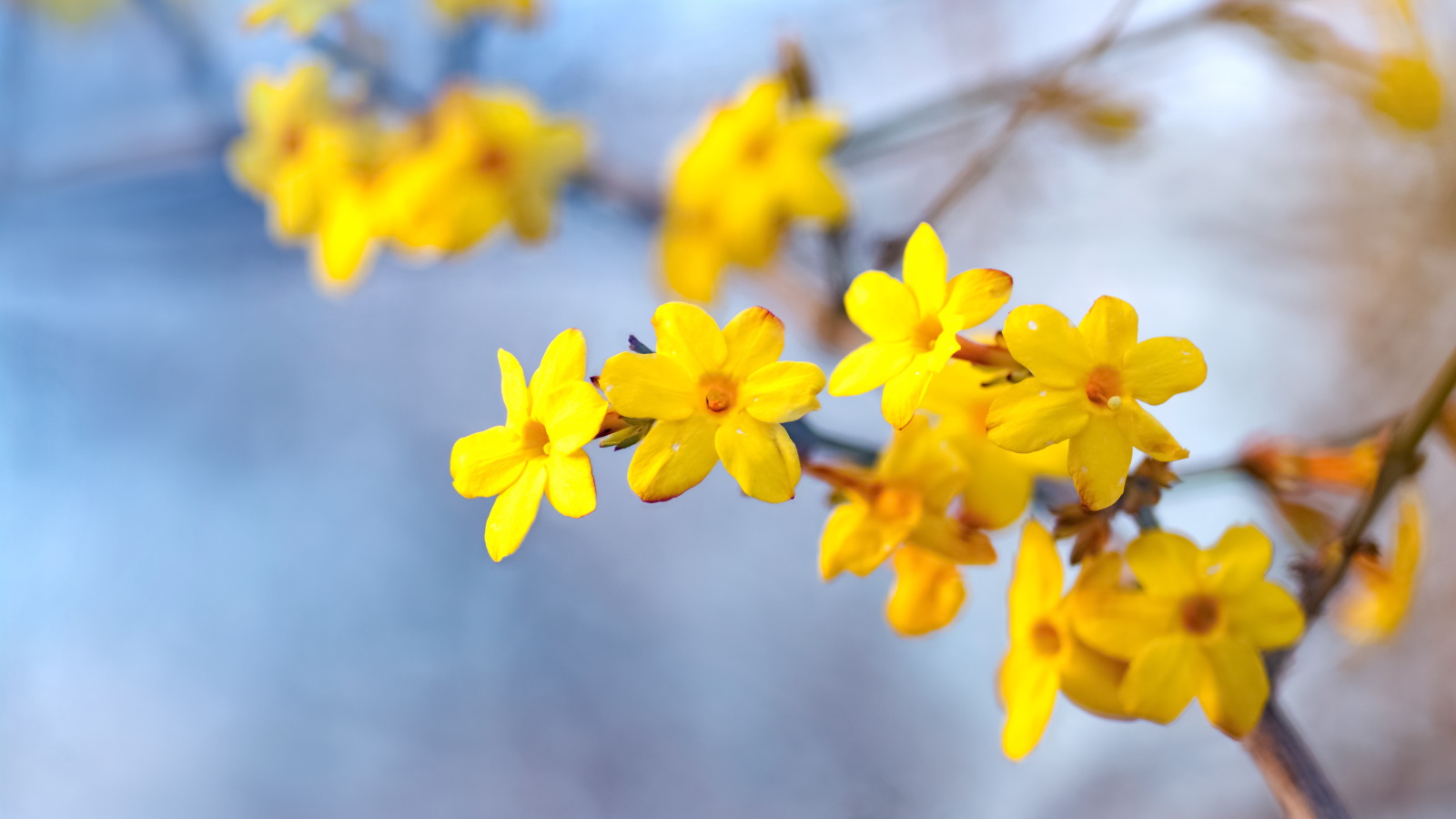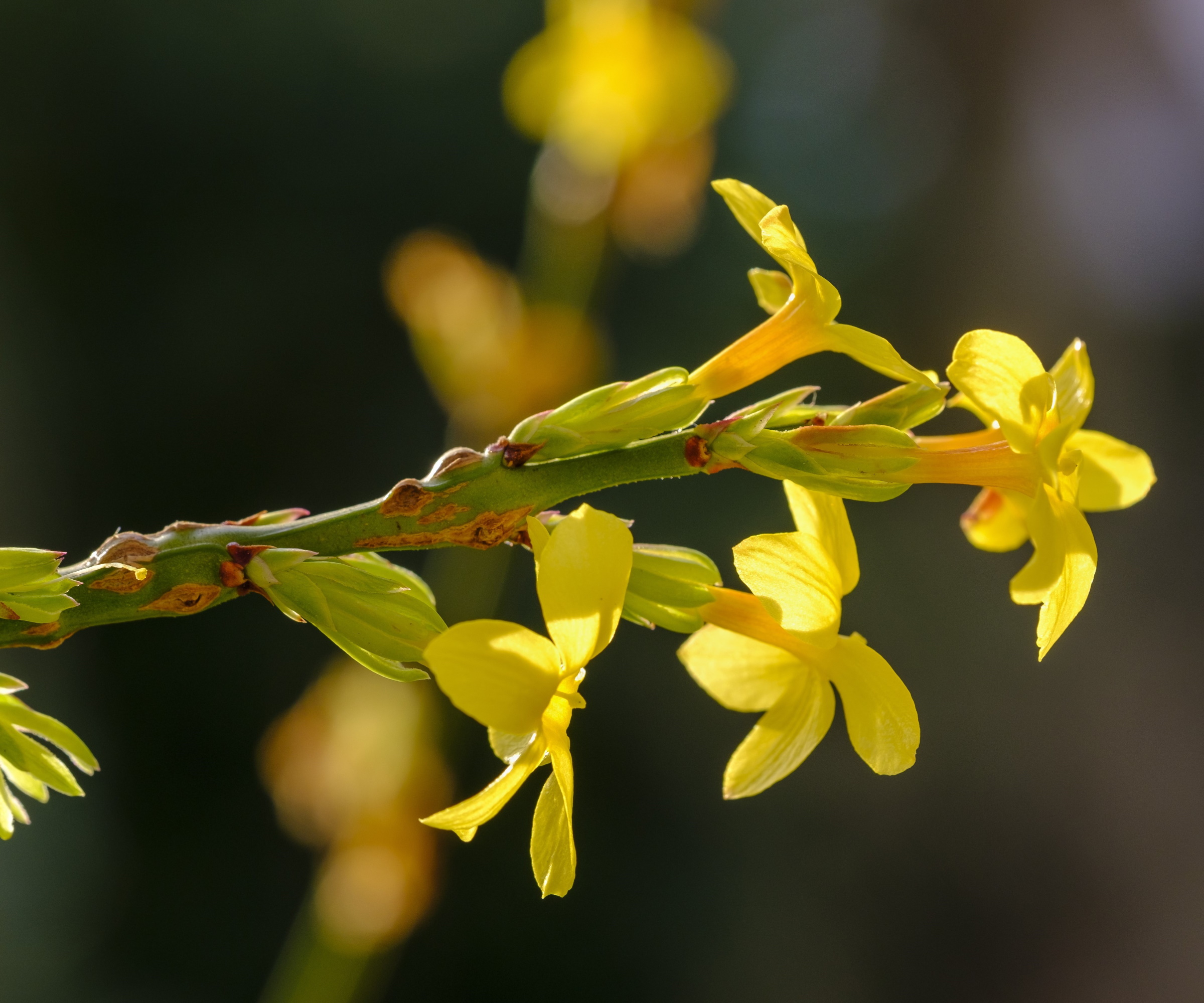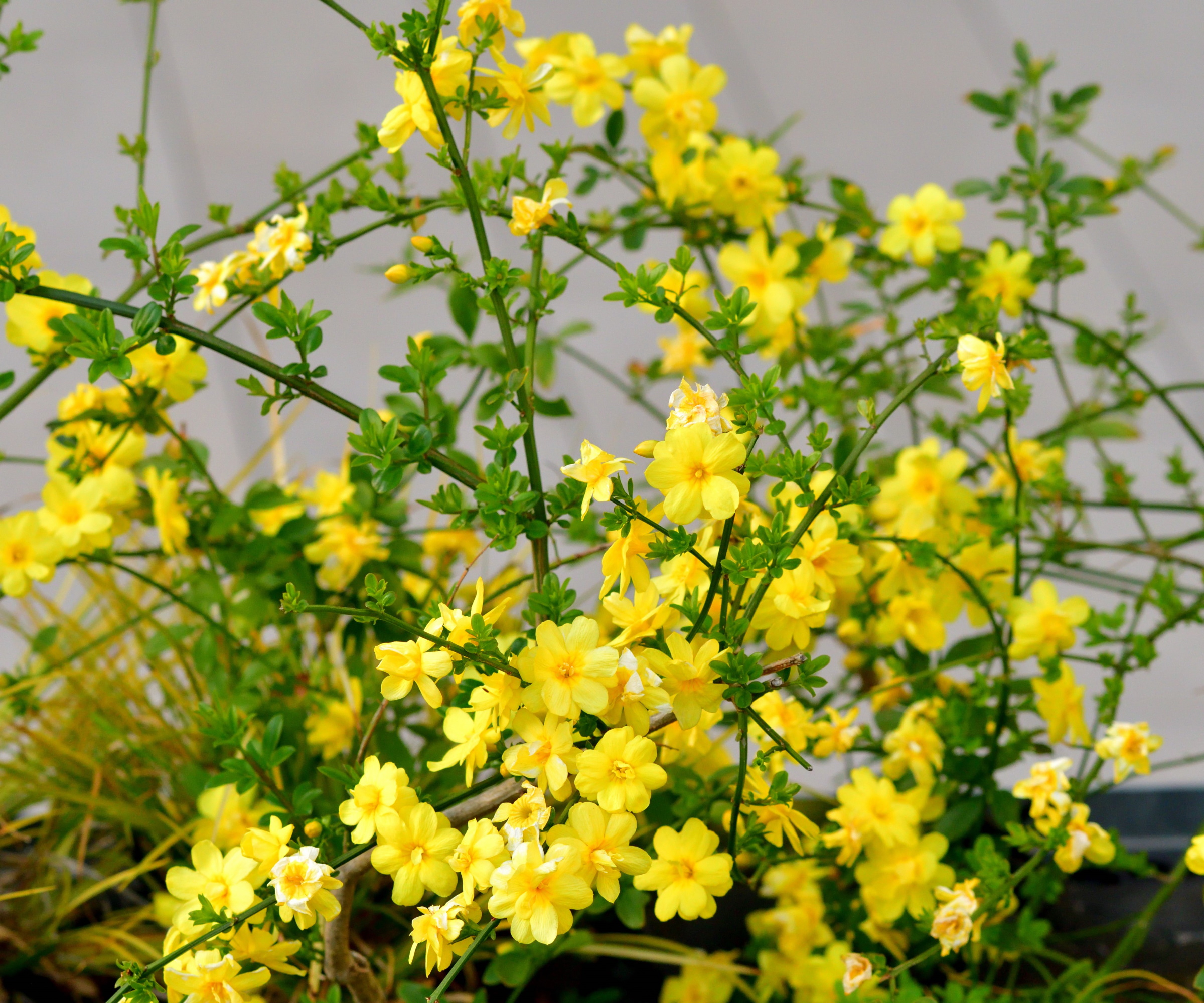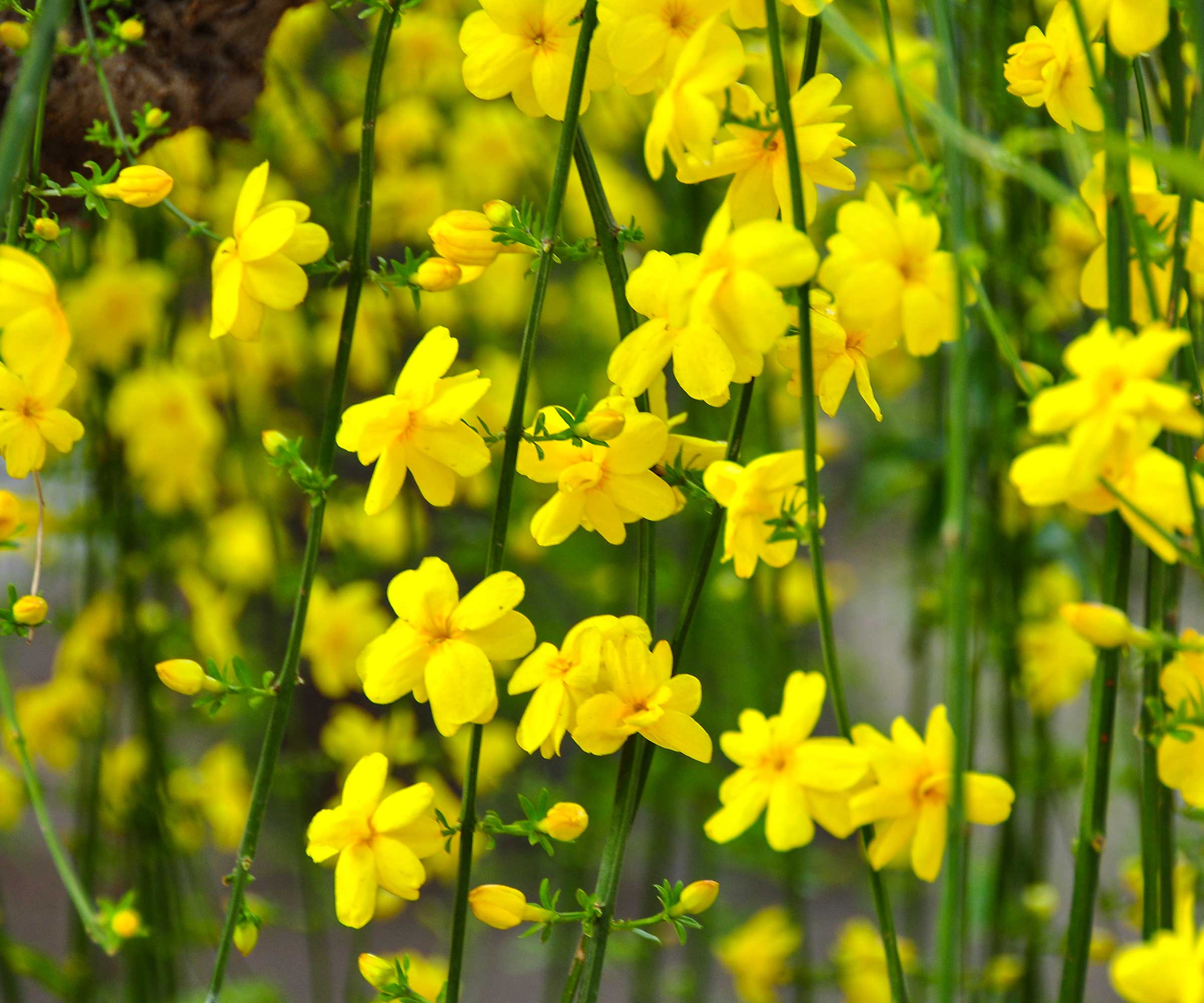
Winter jasmine, or Jasminum nudiflorum, will illuminate your garden in winter. When your backyard might seem gloomy and lacking in color, this hardy shrub adds a burst of yellow when all else appears muted. Jasminum nudiflorum has an unusual growing habit, with yellow flowers blooming on long, bare stems – explaining the Latin 'nudiflorum', which translates to 'naked flower'.
Many gardeners struggle to keep this somewhat unruly jasmine under control, so it is best planted where there is space for it to grow. The willow-like branches offer structure and texture year-round but are particularly pleasing when cascading down walls or over trellis frames in your backyard, a good option if you are looking for winter plants for privacy.
Winter jasmine does tend to have a rambling, almost messy form, which is worth considering if you are a gardener who prefers to keep things neat and tidy. This shrub might not play ball. Many different sizes are available to buy, such as this 3-gallon pot from Garden Goods Direct.
Read on to discover key considerations and top tips for planting and maintaining winter jasmine.

Winter jasmine, Jasminum nudiflorum, is a mounding shrub producing bright yellow flowers in late winter through early spring. Available in 3 gallon pot size.
How to grow winter jasmine?
Follow our simple guide below to grow your own winter jasmine at home, transforming your backyard with masses of yellow flowers through the winter months.
Things to consider before growing winter jasmine

When considering how to grow winter jasmine, note that this shrub is frost hardy, and will grow in US hardiness zones 6 - 10. It will 'tolerate colder temperatures down to 5°F,' says Jen McDonald, gardening expert and co-founder of Garden Girls. Winter jasmine is a 'fantastic hearty climber,' Jen says, 'special in that it flowers in the dead of winter.'
Sadly, and unlike most varieties of jasmine, 'the blooms of winter jasmine are not fragrant,' Jen says. This may be a consideration for gardeners who look for scent in the garden during the winter months, yet the mass of yellow flowers more than makes up for this.
Many gardening experts consider winter jasmine an easy option... perhaps too easy. 'Once established, this excellent vining plant needs little care,' Jen says. It is important to remember, however, that winter jasmine will require occasional maintenance to keep the shrub under control.
This is best done in spring, after flowering, just as the new green growth is about to emerge. Winter jasmine does have a reputation for growing in a slightly unruly manner, so regular pruning will help to keep the plant looking attractive and in the shape you desire.
Top tips for planting and maintaining winter jasmine

- Soil: Winter jasmine will not tolerate waterlogged conditions, so avoid planting in clay soils. It thrives in well-draining soil that is rich in nutrients. Consider adding some organic matter to the soil before or after planting. For example, manure will help to improve the condition of the soil.
- Light: This shrub prefers full sun, and if planted in a sunny spot, it will produce masses of yellow flowers. Whilst it will tolerate partial shade, fewer flowers will result. A location with some protection from winds is advisable, particularly in open sites. Storms can cause irreparable damage to this shrub.
- Watering: Water regularly after planting, checking the soil frequently, especially during dry spells. Once established, this shrub is drought-tolerant.
- Fertilizing: Winter jasmine does not require excessive amounts of fertilizing once established. However, if you are looking for plenty of yellow flowers, a slow-release fertilizer applied in spring can help, such as this smart-release plant feed from Walmart. Always read and follow product instructions so as to not over-fertilize. Remember to not feed in winter, as this can cause damage to the plant.
- Pruning: This is a crucial aspect of winter jasmine care, especially if you are concerned about the shrub looking unsightly or out of control. To maintain a pleasing shape and encourage blooming, it is crucial to prune the shrub after flowering in spring. Remember that next year's flowers will bloom on this year's growth, so it is best to cut back immediately after flowering to avoid damaging or cutting any future flowering stems.
- Additional Tips: Winter jasmine doesn't intertwine itself with surrounding plants or features, unlike other jasmines. Remember to tie in some of the willow-like stems if you are growing up and over a wall or trellis. This will help to guide and shape the jasmine, but also protect the shrub during high winds and storms.
FAQs
How frequently should I prune my winter jasmine?
Regular pruning is crucial for maintaining a healthy and attractive shrub. It is best to prune your winter jasmine in spring, after flowering. Remember that the current year's growth will produce yellow flowers the following winter.
Can I grow winter jasmine in a container?
Yes, winter jasmine will grow well in a container, and this can help to keep the shrub under control. Add a good amount of drainage material at the base of the container, and plant in a well-draining soil mixture, including perlite and sand. After three years, your winter jasmine will have become pot-bound and need repotting into a larger container.
If you are looking to grow jasmine, there are many options to pick from, in addition to winter jasmine. Why not also consider other winter flowering shrubs to add even more color to your backyard in the darker months?







